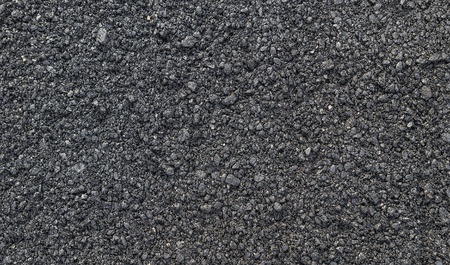Boost the Feel And Look of Your Home with Expert Commercial Parking Whole Lot Paving
Boost the Feel And Look of Your Home with Expert Commercial Parking Whole Lot Paving
Blog Article
Opening the Keys of Hot Mix Asphalt Technology
Discovering the midsts of hot mix asphalt innovation discovers a globe where accurate formulations and thorough processes assemble to form our roadways and facilities. The combination of fillers, accumulations, and binders isn't just a building and construction task but a strategic orchestration of durability and effectiveness. As we peer right into the elaborate dance of elements, a tapestry of strength and sustainability unfolds. What exists beneath this surface of asphaltic mastery, and what tricks wait to be revealed in the realm of paving innovations?
Value of Warm Mix Asphalt
Hot Mix Asphalt plays an important function in contemporary facilities growth due to its longevity and cost-effectiveness. As the most generally made use of leading material for roads, freeways, and vehicle parking lots, Warm Mix Asphalt uses a variety of benefits that contribute to its relevance in building tasks.
The sturdiness of Warm Mix Asphalt originates from its structure, which consists of aggregates, binder, and filler products that are meticulously picked and mixed to meet specific efficiency demands. This specific combination leads to a flexible and solid sidewalk that can endure regular use without substantial wear and tear. Additionally, Hot Mix Asphalt is 100% recyclable, further enhancing its sustainability and ecological benefits. Generally, the importance of Hot Mix Asphalt in framework growth can not be downplayed, as it remains to be a cornerstone of contemporary building and construction practices.
Components of Asphalt Mixes
The structure of asphalt blends is composed of very carefully selected accumulations, binder, and filler products that are critical for attaining particular performance demands. Accumulations are the key element of asphalt mixes, giving strength and stability. The binder, typically bitumen or asphalt concrete, holds the accumulations together and offers adaptability and toughness to the mix.
The mix and proportion of these components play a considerable function in establishing the high quality and efficiency of the asphalt mix. Engineers meticulously create the mix to meet certain demands, thinking about factors like website traffic volume, climate conditions, and sidewalk life expectancy. Proper choice and harmonizing of aggregates, binder, and fillers are necessary for developing long lasting, lasting asphalt pavements.
Combining and Production Techniques

Once the aggregates are chosen, the binder, frequently asphalt cement, is contributed to bind the products with each other. The binder's quality and quantity considerably affect the mix's flexibility, stamina, and resistance to ecological aspects. Furthermore, fillers like moisturized lime or Portland concrete might be integrated to improve details features of the asphalt mix, such as its workability or moisture resistance.
During manufacturing, the accumulations and binder are warmed, commonly in between 250-325 ° F(121-163 ° C ), to facilitate blending and make certain appropriate covering of the accumulations. The blending procedure has to be comprehensive to achieve an uniform blend that advertises the desired performance qualities of the asphalt. Different methods, such as batch mixing or drum mixing, are used to attain regular and high-quality asphalt mixes for building projects.
Aspects Impacting Asphalt Performance
Variables influencing asphalt performance include a variety of variables that affect the sturdiness, long life, and general high quality of asphalt sidewalks. One crucial variable is the top quality of materials utilized in the asphalt mix. The kind and resource of accumulations, the binder top quality, click resources and the ingredients all play a considerable role in determining the efficiency of the asphalt sidewalk. The gradation of aggregates is crucial as it impacts the mix's resistance, workability, and stability to rutting and fracturing.

Environmental problems additionally affect asphalt performance. Temperature level variants, wetness seepage, and web traffic lots can all affect the structural integrity of the pavement. Style considerations, such as pavement thickness and drain, are necessary in making certain the long-lasting efficiency of the asphalt sidewalk. By meticulously thinking about these variables, professionals and designers can maximize asphalt efficiency and enhance the life span of sidewalks.
Sustainable Practices in Asphalt Modern Technology

Furthermore, the development of warm-mix asphalt (WMA) modern technologies has obtained traction recently. WMA enables the manufacturing and placement of asphalt blends at lower temperature levels compared to standard hot-mix asphalt, resulting in lowered energy usage and greenhouse gas exhausts. The usage of porous asphalt mixes can aid reduce stormwater runoff issues by allowing water to infiltrate with the sidewalk and into the ground, advertising all-natural water filtering and reenergize processes. By implementing these sustainable methods, the asphalt market can add to developing a much more eco-friendly and resilient framework network.
Verdict
Finally, hot mix asphalt modern technology plays an important duty in contemporary infrastructure advancement due to its sturdiness and cost-effectiveness. By very carefully stabilizing parts, utilizing correct blending strategies, and considering different aspects, engineers can create top notch asphalt blends This Site that endure rush hour tons and extreme climate condition. Accepting lasting techniques, such as using warm-mix modern technologies and recycled products, better boosts the ecological kindness of important link asphalt technology.
Blending and production techniques in warm mix asphalt innovation include the precise combination and processing of accumulations, binder, and fillers to produce a resilient and high-performance asphalt mix.Factors affecting asphalt efficiency encompass a range of variables that influence the durability, long life, and overall high quality of asphalt pavements. Sustainable techniques in asphalt modern technology incorporate different campaigns intended at reducing the environmental impact of asphalt production and paving procedures. By integrating recovered asphalt pavement (RAP) and recycled asphalt roof shingles (RAS) into new asphalt mixes, the sector can substantially lower the intake of raw materials and power, while also reducing landfill waste.
WMA permits for the manufacturing and placement of asphalt blends at lower temperatures contrasted to conventional hot-mix asphalt, resulting in decreased energy usage and greenhouse gas emissions.
Report this page